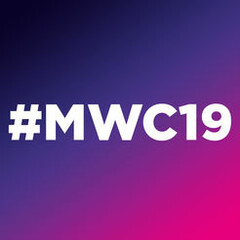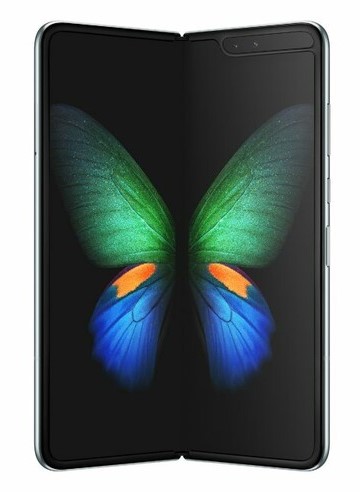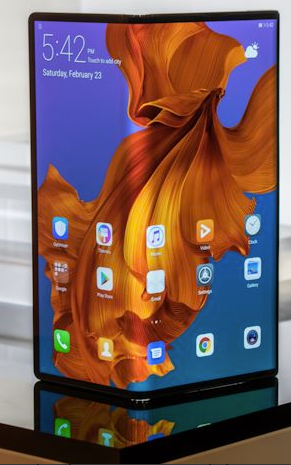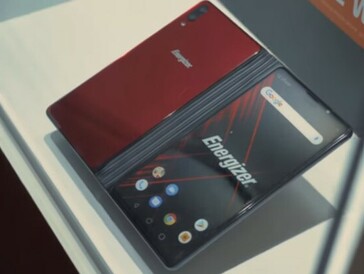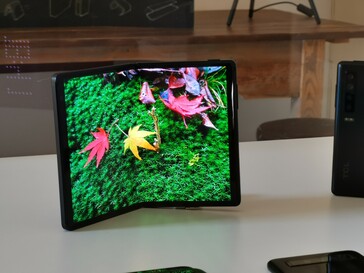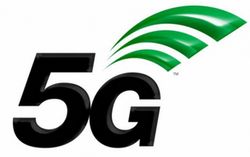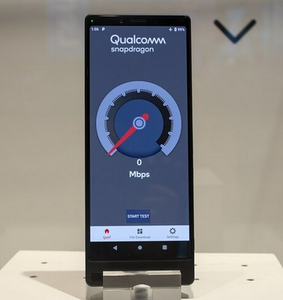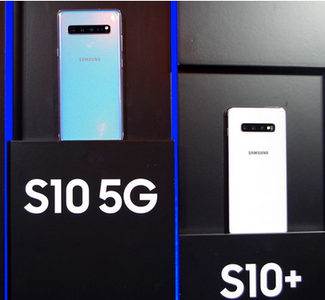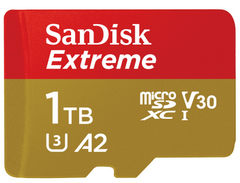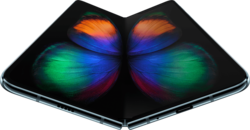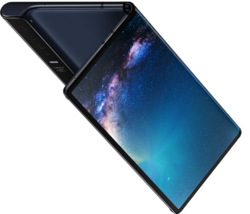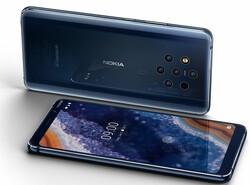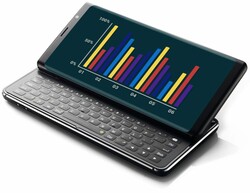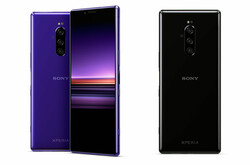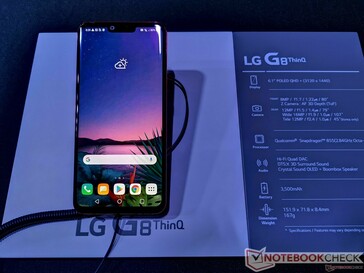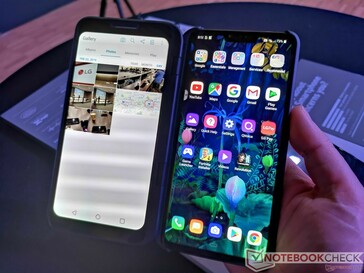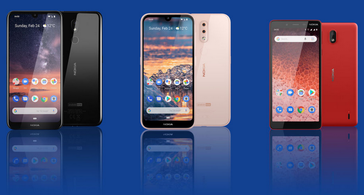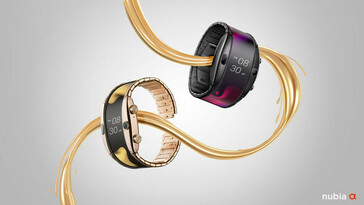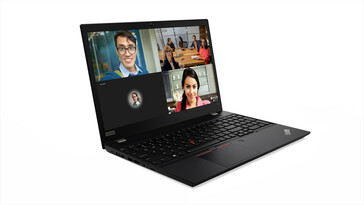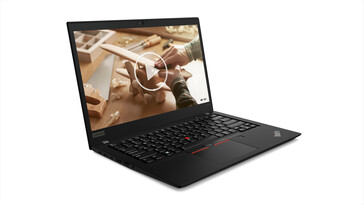Introduction
Mobile World Congress (MWC) is one of the best events for smartphone and mobile device manufacturers to show off their latest and greatest tech, and this year was no different. Big players like Samsung and Huawei brought innovation to a stagnating market, while newcomers like Energizer aimed to fill a niche left empty by more-established OEMs. Here, we will take a look at the good, the bad, and the ugly of MWC19.
New Tech
Before we look at the devices that made a splash at MWC19, let's take a quick look at some of the biggest news to break from the conference.
Foldable Phones - Know when to fold 'em
The biggest buzz at MWC19 surrounded foldable phones. Both Samsung and Huawei debuted smartphones that could transform from the typical candybar form factor into a tablet, thanks to new breakthroughs in flexible displays. Even Energizer and TCL, relative unknowns in the western smartphone world, got in on the foldable game with their own convertible handsets.
While the technology is exciting, we only saw preview devices at MWC. The handsets are as yet untested outside of the showroom floor, so their viability is still in question.
The folding displays weren't the only factors that created headlines; even in the world of ever-increasing smartphone prices, the foldable phones carry massive price tags. Samsung is planning on selling the Galaxy Fold for $1980 in April, while $2600 will net you the Huawei Mate X in the second half of this year. Be on the lookout for in-depth reviews at or near launch time.
TCL and Energizer's entries were merely prototypes; neither company allowed attendees to touch the new tech, and both companies kept mum on pricing and availability.
5G - Close, but still far away
Playing second fiddle to the sleek and sexy foldables was 5G, the new mobile data standard that has been in development for years now. Many manufacturers showed off phones that will be compatible with 5G whenever the technology finally launches in mainstream markets. This list of devices includes Huawei's Mate X foldable, a 5G variant of Samsung's Galaxy S10, and the Sony AG-1 prototype, among others.
Many booths at MWC19 touted technology that would be possible thanks to 5G. Among the highlights were truly smart cars, wirelessly connected robotics facilities, and ideas for smart cities. A large focus also rested on 5G-enabled smartphones (like those mentioned above), although the handsets won't yet be able to take advantage of the 5G modems or their promised speeds.
Despite the developments made over the years, 5G still feels like a technology in its infancy. That's likely because of the massive costs associated with rolling out a 5G network. The GSMA estimates that carriers will spend a collective $160 billion globally every year on building out 5G networks, and that's a conservative estimate. Telecom financing firm Greensill estimates total rollout and infrastructure costs will top $2.7 trillion by the end of next year.
MicroSD cards - bigger, faster, more expensive
Lastly, we'd like to point attention to SanDisk and Micron's massive 1 TB microSD cards. To say that cramming that much data storage into such a small physical space is impressive is underselling it; these cards can effectively fit an entire high-definition movie in an area of 0.5 mm2.
In addition to larger capacities, microSD cards are getting some nice speed bumps. According to the SD Association, the new SD Express protocol, which will come to standard-sized SD cards and microSD cards in the near future, will bring transfer rates up to 985 MB/s, which is on the order of PCIe/NVMe SSDs. Those speeds will support things like high-bit rate 4K video-recording and more.
Best Smartphones from MWC19
Here is a list of the five phones we are most excited about that debuted at MWC19. Each device brings something new to the table, and we cannot wait to get our hands on them.
1: Samsung Galaxy Fold
As mentioned above, foldables stole the show at MWC this year, and the best of the best (at least in our opinion) is the Galaxy Fold. This is, admittedly, an unpopular opinion, so allow us to justify this choice. The Huawei Mate X is certainly the flashier device, but from a usability and longevity standpoint, the Galaxy Fold makes more sense.
For one, the folding mechanism is designed to protect the less durable flexible display. Glass doesn't fold (yet), so both Samsung and Huawei opted for a flexible plastic panel for their devices' respective foldable screens. These are more prone to scratches, so having the foldable display kept inside the phone will protect it when the phone is folded up and put in a pocket. Additionally, opening the display like a book puts less strain on the screen and doesn't stretch the plastic. There's also no unsightly bubbling along the middle "crease" of the Galaxy Fold, while Huawei's offering tends to bunch up in the center.
Practically speaking, we would expect the Galaxy Fold to last much longer than the Huawei Mate X and have fewer problems down the line simply due to the fact that its most fragile component, the flexible display, will undergo much less stress than the Mate X's. It also doesn't hurt that the Galaxy Fold offers a similar experience to the Mate X for about $600 less; the Galaxy Fold is priced at $1980, while the Mate X is expected to retail for $2,600.
All that being said, there are some aspects about the Galaxy Fold that draw our ire. For one, the foldable display has an unsightly notch cut out of the top right to house some cameras, there's an unseemly gap when the device is closed (similar to the Surface Book's), and the phone is chunky compared to the Huawei Mate X. However, our opinion is that the Galaxy Fold represents a better investment; considering the financial outlay needed for a foldable smartphone, the Galaxy Fold is likely to last a lot longer than the Mate X.
2: Huawei Mate X
This one is probably predictable, but Huawei's Mate X is simply stunning. Everyone in the tech industry is buzzing about the Mate X and with good reason. The foldable looks much sleeker and flashier than Samsung's Galaxy Fold. While the Fold looks like a thick book, the Mate X is thin and smooth. The lack of a display notch and 5G support are other high points for the device.
Speaking of high points, the price of the Mate X is perhaps the primary roadblock. At ~$2600, the Mate X is almost three times as expensive as other premium flagships. Additionally, while the folding design of the Mate X looks great on a showroom floor, we have some reservations about its longevity. The screen is easier to scratch and mar and the folding mechanism may stretch the display or cause permanent ridges over time.
Still, there is no denying that the Huawei Mate X is a marvel of modern engineering. We'll be sure to get our hands on it when it comes to retail, although that may be a difficult task: Huawei isn't planning on releasing the Mate X stateside.
3: Nokia 9 PureView
Nokia had a number of devices ready to show at MWC, ranging from decent budget devices to the unique Nokia 9 PureView. We knew a lot about this phone prior to its unveiling, but it was great to see the device in the flesh. The PureView sits in a unique spot in the smartphone world with a pentalens camera array on the back, and Nokia has put quite a bit of research and development into that camera system.
The Snapdragon 845 at the phone's heart has been tuned to control each of the five 12 MP f/1.8 28 mm cameras (two RGB, three monochrome) to deliver a wide range of depth information in each shot. Nokia claims the PureView can capture 1200 layers of depth data, which should allow users to shift the focal point of a photo in post. The camera system can also capture quite a bit of dynamic range (12.4 stops of light difference) and supports RAW images.
The rest of the specs are fairly run-of-the-mill for a $700-phone in 2019 (6 GB of RAM, 128 GB of storage, 6-inch QHD+ pOLED display), so the Nokia 9 PureView should be a decent phone in its own right. Thanks to its camera setup, this may be the phone for photographers this year.
4: F(x)tec Pro 1
Once upon a time, top-of-the-line phones had physical keyboards. Now, keyboards are a rarity in smartphones. Physical keyboards can only be found in BlackBerry's latest devices, but there is still a crowd clambering for keys. Enter the F(x)tec Pro 1.
The F(x)tec Pro 1 features a slide-out landscape QWERTY keyboard (à la the Motorola Droid of old) that tilts the 6-inch FHD AMOLED display at a slight angle when deployed. The phone runs on a two-year-old SoC (the Snapdragon 835, to be exact) but should easily keep up with modern flagships. Otherwise, the Pro 1 looks like a decent handset in its own right.
It warms our nostalgic hearts to see a manufacturer reviving the glory days of phones with keyboards, but it remains to be seen how the public receives the classic form factor. The F(x)tec Pro 1 is up for preorder for $650 and is expected to launch in July.
5: Sony Xperia 1
The 16:9 aspect ratio is so two years ago. Every flagship now offers either an 18:9 or 19:9 aspect ratio, but Sony is taking the "tall and skinny" trend even further with the Xperia 1. The Japanese company's latest flagship features a 6.5-inch 21:9 1644x3840 OLED HDR display.
Sony designed the phone for cinephiles, as most theatrical movies are shot in the 21:9 aspect ratio. The Xperia 1 focuses on content creation and includes Sony's BRAVIA color technology and a Cinema Pro mode that allows smartphone videographers to shoot 21:9 videos at a cinematic 24 fps. Other 2019 flagship specs grace the Xperia 1 (Snapdragon 855, 6 GB RAM, 128 GB storage). Pricing and availability have yet to be officially announced, but that tall 4K-esque screen likely won't come cheap.
Honorable Mentions
The myriad of devices at MWC made paring down our list a difficult task. The other devices and technology on display were, for the most part, exciting, but the phones listed above stood out from the pack. Still, we'd like to acknowledge some of the other phones and computers at MWC19.
LG debuted its latest flagships, the G8 ThinQ and the V50 ThinQ 5G. Both handsets feel like iterative upgrades over their respective 2018 counterparts and don't seem to offer much more than a spec bump. The G8 ThinQ now includes a new biometric security measure that can scan the veins in a user's palm to unlock the phone, but the feature seems gimmicky at best. The V50 ThinQ 5G is compatible with a case that houses a secondary display, mimicking the foldables seen from other companies. While this solution is much more affordable, the usefulness of the distinctly separate second screen is questionable and feels like a weak response to the Galaxy Fold and Mate X.
Nokia debuted three new budget devices, the Nokia 1 Plus, Nokia 3.2, and Nokia 4.2. All three handsets look like decent phones for their price brackets. Nokia has been highly competitive in the budget segment over the past few years, and these phones look like they'll continue that trend.
The Nubia Alpha blurred the line between wearables and smartphones with its wraparound display. While the specifications are akin to the typical Android Wear smartwatch (Snapdragon 2100, 1 GB RAM), Nubia offers a variant of the Alpha with 4G eSIM support. Depending on how Nubia supports the device, wearable screens may come roaring into fashion this year.
Lastly, Lenovo showed off the latest entries in the storied ThinkPad lineup. The new T490, T490s, T590, X390, and X390 Yoga devices all made appearances at the trade show. These devices, and the T-series in particular, represent a major turning point in the ThinkPad design ethos. Lenovo is pursuing thinner machines at the cost of connectivity and upgradeability. For some users, the smaller waistlines are welcome changes in an ever-more-mobile world, but others are lamenting what they see as the further neutering of the ThinkPad brand. We will reserve final judgment until we have reviewed the devices later this year, but suffice it to say this represents the biggest shift in design since 2013's T440 and T540 devices.
Wrapping Up
MWC19 was the most-interesting Mobile World Congress in the past few years. The Samsung Galaxy Fold and Huawei Mate X are exciting new physical demonstrations of the next possible step in the evolution of mobile computing. Other devices, like the Nokia 9 PureView, show that manufacturers may be focusing on something other than the fastest components on paper. The "Smartphone Specs War" may be winding down, allowing companies to shift their focus onto defining features that make smartphones feel different from one another. After three years of seeing the same candybar phones hewn from glass and aluminum, we may see some truly unique handsets over the coming year.




